Book review: John’s Gospel: The Way It Happened
by Lee Harmon
★★★★★
Today is publication day! I’m celebrating for now by sharing a five-star review that blew me away. It’s by Vicki Liston, author of Europe for the Senses – A Photographic Journal. Thanks for the kind words, Vicki!
** ** **
Author and Bible scholar Lee Harmon releases his second book and sequel to his “Revelation: The Way It Happened”. This time deciphering the fourth New Testament book, “John’s Gospel: The Way It Happened” offers a fresh, enlightening, and downright surprising look at these scriptures while explaining why our traditional translation simply does not make sense.
While “Revelation” concluded with the protagonist, Matthew, as a Jewish-Christian boy reaching the ‘manhood’ age of 13, “John’s Gospel” picks up with a more grown-up, discouraged Matthew during his 28th year. As the story begins, the apostle John, aware that his life is coming to an end, is compelled to pen his last letter. A stubborn Matthew refuses but a Gentile woman now living in Matthew’s boyhood home agrees to transcribe John’s words. The trio discusses and debates the text as John explains why the customary idealism of a ‘conquering warlord Messiah’ who comes to wipe out and destroy all ‘bad’ in the world is way off the mark. Matthew’s obstinacy provides the platform Harmon needs to delve into his explanations, which are structured and clearly detailed. Not only does he make his points, he makes them exceptionally well and with plenty of source material to back them up.
“John’s Gospel: The Way It Happened” embodies the same brilliant organization and style of its preceding volume, “Revelation: The Way It Happened” – with a fictional story woven in and out of Harmon’s interpretation of the biblical gospel. And like his first book, he ensures that Bible scripture, his interpretations, and the fictional story stand out as discernible sections by using separate fonts and utilizing appropriate spacing. The organization is imperative in being able to follow Harmon’s train of thought and he provides that and much more in this skillfully organized format.
As with “Revelation”, “John’s Gospel” is easy to follow and enjoyable to read, especially for those less inclined to read a straight forward, biblical analysis (read: dry). Harmon writes with passion grounded in intelligence and a profound background on the subject which not only makes the book educational but entertaining. Its message is one that those frustrated with the rigid legalistic or fundamentalist translations of the Bible will greatly appreciate, identify with, and even happily embrace. The set up of the book works in a relaxed story-reading scenario for families or as prepared Bible study utilizing sections or chapters as starting and stopping points. Regardless of the environment in which it’s used, “John’s Gospel: The Way It Happened” is a must read for any Christian. Once again, very well done!

Book review: Walking Toward Morning
by Victoria Safford
★★★★★
Victoria is the minister at the White Bear Unitarian Universalist Church in Mahtomedi, MN, just a few miles from where I live. I’ve only met her briefly, but we’ve communicated a bit by email, and I’ve come to appreciate her sincerity and genuineness.
This little booklet presents various reflections on life and purpose. It works great as a month-long collection of morning meditations. It’s not meant to describe UU teachings, but it gives a flavor for the sacred, while managing to avoid any particular religious paradigm—no foundation upon any single religious teacher such as Jesus.
Victoria gave me permission to simply quote an essay from her booklet. This is the one I chose, titled In Between, a particularly poignant selection for me as I just became a first-time grandpa on Sunday … and quickly picked up the phone to share my joy with my elderly mother. 
** ** **
One afternoon some time ago I brought my little baby out to visit a very, very old neighbor who was dying that year, quietly and gracefully, in her gracious home. We were having a little birthday party for her, with sherry and cake and a few old friends gathered round her bed. To free a hand to cut the cake, I put my baby down right on the bed, right up on the pillow—and there was a sudden hush in the room, for we were caught off guard, beholding.
It was a startling sight. There in the late afternoon light were two people side by side, two human merely beings. Neither one could walk, neither one could speak, not in language you could understand, both utterly dependent on the rest of us bustling around, masquerading as immortals. There they were: a plump one, apple-cheeked, a cherry tomato of a babe, smiling; and a silver-thin one, hollow-eyed, translucent, shining, smiling. We revelers were hushed because we clearly saw that these were dancers on the very edge of things. These two were closer to the threshold, the edge of the great mystery, than any of us had been for a long time or would be for a while. living, breathing, smiling they were, but each with one foot and who knows how much consciousness firmly planted on the other side, whatever that is, wherever that is, the starry darkness from whence we come and whither we will go, in time. Fresh from birth, nigh unto death, bright-eyed, they were bookends there, mirrors of each other. Radiant.
Cake in hand, and napkins, knife, glasses, a crystal carafe a century old, we paused there on the thresholds of our own momentary lives. Then, “What shall we sing?” said someone, to the silence, to the sunlight on the covers, to the stars. It was the only question, then, as now, years later. What on earth shall we sing?

Book review: Crossing the Street
by Robert LaRochelle
★★★★
If I recall correctly, I requested this book from the author, rather than it just being sent to me for review. It struck me as interesting that a Roman Catholic of 45 years, who served as Deacon within the Archdiocese of Hartford, would leave it all behind to become a minister of a Protestant church … while still affirming the validity of the Catholic Church! LaRochelle not only crossed the street to see what the neighbors were like, he took up residence there.
Why step down from the one true church? What is the difference between Catholic and Protestant, anyway? And how does it feel to be excommunicated from one’s lifetime heritage … for that is Roman Catholic canon law for LaRochelle’s situation.
He left in part because he could not uphold certain doctrines, such as the Immaculate Conception and the Assumption of Mary. He also felt uncomfortable with conservative church stances against such things as abortion and gay marriage, and even more innocuous issues like birth control and annulment. (Odd that over 90% of Roman Catholic couples practice some form on contraception in opposition to official church teachings.) He notes differences in religious philosophy, such as the Catholic reliance upon papal decisions versus the Protestant insistence that our only needed answers come from the Bible.
The book was a little dry in places, but it still held my attention well. The most powerful passages are the personal ones, telling LaRochelle’s own maverick story. The most interesting were the insights into Catholic doctrine, and how it has shifted in emphasis over the last half-century. The most meaningful are surely those that extol the positive contributions of both Protestant and Catholic traditions to the universal church. By “universal church,” LaRochelle means Christians; while he briefly encourages opening our understanding to other religions as well, that is not the focus of the book.
LaRochelle speaks of being “profoundly grateful for the gifts I have received from both my Catholic and Protestant heritages,” but he notes that crossing the street isn’t easy. Those on the Religious Right tend to label more progressive believers as possessing something less than the truth faith. Conversely, it is extremely difficult for the progressive side to be at ease with a fundamentalist position. Yet LaRochelle points us to the words of Jesus who, in a moment of prayer not long before he was killed, pleaded that those who would be his followers might “all be one.”

Book review: The World That Shaped the New Testament
by Calvin J. Roetzel
★★★★★
This is a great little introduction to the political and religious atmosphere of New Testament times. I read this 2002 revised edition which I picked up at a Christian campus bookstore, where it is sold as a textbook.
The political setting begins with Alexander the Great and continues on into the time of Herod the Great and his descendants. It discusses competing Jewish sects (Pharisees, Sadducees, etc.), Hellenistic philosophies (Stoicism, the Cynics, and Neopythagoreanism), early Gnosticism, and the Imperial Cult. It delves into the social and family setting in Palestine and the Diaspora, and explains the role of the Temple. It talks about modes of scriptural interpretation (such as midrash) and the influence of Philo and the rabbis. It concludes by attempting to describe (for most of us can at best only imagine) a worldview which accommodates angels, demons, and other supernatural explanations in a dualistic world, and the eschatological expectations held by the Jews. Into this atmosphere strode Jesus.
It’s short, not at all in depth, but very good as an intro to the times.

Book review: Revelation: The Way It Happened
This review is by goodreads friend and blogger Dave Hershey. Check out his blog at http://davehershey.wordpress.com/ for some interesting book reviews!
*********
I grew up in an evangelical Christian culture that is obsessed with the final book of the Bible, Revelation. People in my family and church often spoke of Revelation as the blueprint for the end-times, which are certainly going to happen soon. This fervor increased with the release of the Left Behind book series. These books popularized the “futurist” and “dispensationalist” interpretation of Revelation.
In some way, those books began my movement away from such understanding. As a teen, I found them to be poorly written fiction. When I went to seminary my New Testament professor was known for opposing the theology of the likes the Left Behind series promoted. Studying Revelation with Dr. Lowery opened my eyes to a different way of understanding Revelation, a way that was much more historically grounded, recognizing the book had to mean something to those who first read it, as well as much more challenging, in that it has a message for us today, right now, and not just about the future.
One could say that my understanding of Revelation has been moving from a futurist perspective, where the whole of it takes place in the future, towards more of a preterist perspective, where the whole of it, or at least much of it, took place in the first century.
This is the background I brought to my Goodreads’ friend Lee Harmon’s book, Revelation: The Way it Happened. Interacting with Lee on Goodreads has been fun. Lee is a liberal Christian, bringing a completely different perspective to the scripture then I am used to. Thus I was not sure what to expect from his book. To be blunt: I loved it.
Lee brings a unique view to Revelation. While scholars debate over whether Revelation was written prior to 70 AD or around 95 AD, Lee argues it was probably written in 79 AD. This is a minority view for sure. For Lee, the first half of Revelation tells a story that has already happened, centered on the Jewish War with Rome and the persecutions of Christians by Emperor Nero. Revelation can tell this story not because it is predicting it with God’s help, but because it has already happened.
Lee then sees the second half of Revelation as a prediction of the immanent end of the world complete with the return of the evil Nero leading an invasion from the east to take revenge on his enemies. But Nero will be defeated by Jesus Christ, leading an army of martyred saints delivering justice to God’s enemies. But of course, none of this happened and the world did not end, which is why Lee sees Revelation as a failed prediction. The world kept plugging along, the end did not come.
This is not a scholarly commentary, though it is clear Lee has read many scholarly commentaries. Lee places his commentary on Revelation in the context of a discussion between a father and a son. The father, Samuel, fled from Jerusalem prior to the Jewish War, and has lived in the city of Ephesus ever since. Samuel and his son, Matthew, are Jews, but have joined the fledgling Christian movement. The most interesting part of the book is their interactions, as well as flashbacks that tell the story of Simon’s other son who died during the war.
What I most found intriguing about the book is how it weaved a variety of genres together: there was the story of Samuel and Matthew, the actual text of the book of Revelation as well as Lee’s commentary notes on it. One thing my professor used to emphasize about Revelation itself was its weaving of genres as well as its movement around in time. Lee’s story has Revelation jumping around, taking the reader back in time before returning to the present and then zipping into the future. I believe even futurists would not see Revelation as linear, since chapter 12 is the story of Jesus’ birth. But my point is that the style of Lee’s book in some way mirrors the style of Revelation. At times it was not easy to follow Lee’s story and commentary with flashbacks and footnotes thrown in (I would not recommend it as an e-book). Then I realized that is kind of how Revelation is: it is not easy to follow because it jumps between the past, present and future. Lee, I’m not sure if you intended that, but I liked it.
Of course, there are a few points I would not agree with Lee on. His theology and mine are different. That said, I think this book could be a fruitful read for any student of scripture. There were times when I do wish Lee had included more references to his sources, explaining a bit more how he made a connection from a passage in Revelation to a specific interpretation. But again, a scholarly commentary this is not and Lee does include a list of sources at the end of the book for further reading. If anything, this book has made me want to explore preterism even more, so I am appreciative of that. Overall, thanks Lee for an entertaining, thought-provoking and enlightening book.

Book review: Deconstructing Lucifer
by David W. Lowe
★★★★★
Lucifer. The mere mention of his name sends shivers down your spine, doesn’t it? Who is this evil angel of light, this beautiful but disobedient “son of God” who fell from glory?
He’s not who you think. First, David Lowe digs up the origin of the proper name Lucifer. He gives a solid argument for rejecting the idea that Isaiah 14:12-15 (the Lucifer passage) refers to Satan. He provides a hilarious discussion of the absurdity of thinking Ezekiel chapter 28 alludes to Satan as the “anointed cherub.” He leads us on an interesting quest to find the earliest references to the idea that Satan is a primordial fallen angel. It turns out to be post-Biblical; the Catholic Church screwed up this time. Then, he reconstructs Satan from Biblical passages (and a little help from the Book of the Watchers in 1 Enoch—Lowe feels that Jude’s reference to this ancient book in verses 14-15 lends it authority) to determine who the old snake really is.
So what do you think? If Satan is not Lucifer, the fallen angel, then who the devil is he? I’m not going to steal Lowe’s thunder, but I will give you a couple hints:
1. Lowe is a conservative Christian who appears to embrace the inerrancy of Scripture. His argument for Satan’s identity and role derives completely from the Bible.
2. You can ignore all those recent books I’ve been reviewing about the Problem of Evil. Oh, it’s still a problem alright, but not the way you thought.
So how do I rate the book? There are a few problems. One is that I’m hardly conservative, so the whole exercise was more academic than meaningful to me. Second, I found the ending a little anticlimactic after the buildup. Finally, I felt more than a little annoyed at Lowe’s digs at the Catholic Church as a tool of the Devil. Yet I so enjoyed the first 130 pages that I decided to stick with a five-star rating. Lowe has done his homework.
** ** **
Side note: While hardly the in-depth analysis that Lowe provides, and while we differ in opinion on some minor details, this short three-part series posted last October might whet your appetite on the topic before moving on to Lowe’s book:
http://www.dubiousdisciple.com/2012/10/isaiah-1412-the-origin-of-lucifer-part-i-of-iii.html
http://www.dubiousdisciple.com/2012/10/2-corinthians-1114-the-origin-of-lucifer-part-ii-of-iii.html
http://www.dubiousdisciple.com/2012/10/isaiah-143-5-the-origin-of-lucifer-part-iii-of-iii.html

Book review: A Faith of Our Own
by Jonathan Merritt
★★★★★
This is a book every Christian in America should read.
While I manage to avoid politics on my blog, I have been a little less successful on social media. This past election was scary and embarrassing. I have never felt our country so divided in my lifetime, and I have especially never felt Christians so divided.
Enter Merritt’s new book, with its subtitle of Following Jesus Beyond the Culture Wars. Merritt is an evangelical Southern Baptist, but the identification means little. A new wave of Christians are growing up in the church, and making a positive course correction by moving beyond partisan politics, following Jesus without fighting the culture wars.
For many, having churched in an us-versus-them atmosphere, this new wave will be uncomfortable. Merritt tells how, having been raised in a conservative family with ties to the “so-called Religious Right,” he thought faithful followship of Jesus meant defeating liberals.* Like Forward contributor Kirsten Powers, I, too, have been asked, “How can you be a Democrat and a Christian?” Oddly, I sometimes wonder the opposite: How can you be a Republican and a Christian? So, Merritt set me straight as much as he did the GOP.
The new wave of young Christians have so had it with partisan politics that they are voting not for Christian principles but against culture wars. A poll conducted by Relevant magazine during the election year—a publication influential among young Christians—asked “Who would Jesus vote for?” The majority of respondents were self-described conservatives, and yet their top response was Barack Obama. Horrors!
Today, we know who won. Obama and the conservatives. Eh??
Take the issue of homosexuality. Merritt waffles all over the place, like he can’t make up his mind what his stance should be. To a lesser extent, he does the same with a short discussion on abortion. Even I was frustrated as I read! Get off the fence, man! Only later does Merritt explain that he purposefully avoids contentious issues as a distraction to the hands-on teachings of Jesus. Jesus didn’t ask Peter to picket the wolves, but to feed the sheep, right?
Chastised, I realized that I had forgotten the spirit of my own recent book. Merritt has hit the nail on the head, and accomplished it with a book that you won’t be able to put down.
* Liberals = “a cantankerous minority of secular humanists attempting to chase Jesus out of God-blessed America.”

Book review: Immortal Diamond
by Richard Rohr
★★★★
Ready to experience the mystical side of Christianity with a Franciscan friar? Here’s a journey that Father Richard Rohr promises will secure a happier existence. It’s the quest for your True Self … the resurrected self, the “immortal diamond” deep within you, which he says is neither God nor human, but both at the same time.
It took me a little longer than usual to get into the book, which keeps it below a five-star review, but it was worth the persistence. My problem was that Rohr writes with a sort of matter-of-fact authority that left me wondering if I missed the proof text somewhere along the way. Perhaps I did; Rohr has published around two dozen books since his first in 1976, and this is the first I’ve read.
Rohr’s target is those who sense God is closer than they’ve been told. If you find yourself “in recovery from religion,” you’re in Rohr’s crosshairs. He wants to introduce you to a deeper meaning to life, deeper even than the surface Christian tradition that has been your paradigm to date. While Rohr’s heritage is clearly Judeo-Christian, and many of his quotes come from the Bible, he aims at uncovering the perennial truths that all religions share.
Resurrection is key, both of our Lord and of ourselves. Resurrection is necessary for new life, life in unity with God. As “children of the resurrection” (Luke 20:36), our relationship with God changes … we “breath God in and out—much more than we ‘know’ God, understand God, or even talk to God.” There is an intimacy with God at this level that we never reach within our selfish, base existence, the “False Self.”
A deep read, if you’re ready to take the leap.

Book review: Of Pandas and People, Part II of II
by Percival Davis and Dean H. Kenyon
★★★
“Intelligent Design” theory (ID) proposes that life on earth came about through design by an intelligent being. Proponents seek to highlight problems with traditional evolutionary theory, and instead point to evidence that looks like life was designed. Yesterday here on my blog, I highlighted a bit of history for Of Pandas and People, and how it became an important textbook for the theory, mired deeply in an emotional and legal battle between science teachers and the Christian parents of high-school-age children.
ID doesn’t imply a young earth (though some ID theorists do think the earth is 10,000 years old or less). It simply insists that somebody made all this on purpose. Many species came into being, and then perhaps went extinct, over the last four billion years. Somebody, IDers propose, had their hand in the process the whole while, creating new species here and there over time. In order to argue the point, Davis and Kenyon examine the evidence from six different directions:
- Theories about the origin of life
- Genetics
- How new species supposedly evolve
- Whether the fossil record supports evolution
- Homology
- Biochemical similarities
IDers don’t deny microevolution. It’s hard to deny what has been reproduced in laboratories. Since the arrival of genetics, a field of study which examines the molecular structure of genes, there is no longer any question about microevolution. That is, minor mutations occur within a species, sometimes self-correcting in later generations. But Davis and Kenyon maintain that macroevolution—creation of an entirely new species—remains statistically improbable. (I think the statistical examples given assume that random mutations all occur within the same individual, but even overlooking this assumption, the improbability still looks daunting.)
The problem is, the evidence says it happens, even if we don’t yet comprehend all the details! We might, for example, examine the 24 chromosome pairs of chimpanzees and wonder how scientists can imagine that we lost one when mankind branched off from other primates. Humans only have 23. Well, we did wonder, until we discovered precisely the two that merged into one, and traced exactly where they merged. Our chromosome 2 is a perfect match for the combined chromosomes 12 and 13 of a chimpanzee. Whether or not the idea of mankind sharing a common ancestor with other primates is distasteful, the evidence says it is so.
Thus, Davis and Kenyon have an uphill battle to fight, and some of their conclusions appear on shaky ground. There are many arguments in the book which are violently opposed by mainstream scientists, but at least two problems are so obvious that I should think any high school student of biology would immediately recognize them. One is during the discussion of whether fossils support ID or evolution. The difficulty for evolutionists is that there is an abundance of available fossils, but a relatively small proportion show a transitory state between species. The transitory record is not voluminous enough to be smooth. If, as Darwin supposed, organisms gradually evolve from one to the next, why does the fossil record have so many missing links?
So if evolution is true, it turns out not to be smooth, but “jumpy,” with transitions occurring relatively quickly (within tens of thousands of years, instead of millions). Evolutionists have differing theories about why this is so, generally assuming that accelerated transition occurs during periods of reproductive isolation. One way or another, a species is split by a barrier, and adaption to a new climate or circumstance requires rapid development in a small group, aided by in-breeding. This would account for “jumpy” evolution and the relative scarcity of transitional fossils. But to imply that the fossil record does not support evolution is simply incorrect, and any high school biology student should be aware of this. Fossil examples of transition between species are known, they are located in time and place precisely where they would be expected, and they seem to be no more rare than would be expected. We are filling many of the gaps in the fossil record, having found transitions leading from fish to amphibian, amphibian to reptile, and from reptile to birds and mammals. Of course, this can never wholly satisfy ID proponents, because when an apparent connection is found, such as the Archaeopteryx (a half-reptile, half-bird from about 150 million years ago) it is simply hailed as one more place where a creator may have designed a new “species.” Though I can’t for the life of me figure out why God would have done that on purpose.
Yeah, I said God. Let’s quit hiding behind the obvious agenda; the designer is presumed to be the Christian God. This becomes a little problematic in places, for it is hard for IDers to admit God made a few mistakes along the way. “Every species has been given an optimal body form which maximizes its function in a particular habitat.” With this assumption it becomes necessary, for example, to deny that man has the useless remnants of a tail in his skeletal structure. Instead, IDers argue that the Coccyx at the base of man’s spine is a logical design, with a completely different function than a tail; it serves as a point of attachment for muscles of the pelvic floor.
Can we really explain away this sort of oddity as Design? And if so—if we humans are already perfect—why are we made such that our genome continues to duplicate (a process called recombination) from generation to generation? Doesn’t this result in needless genetic disorders and susceptibility to diseases? Recombination seems like a pretty sloppy design if any resulting mutation is always for the worse. However, the duplication process (resulting in extra copies of genes) sure is handy for evolution! While one copy plugs along as usual, the other copy is free to mutate and take on new functions. If God felt he was designing a perfect being, duplication turns out to be a big mistake. But if God wanted to set the process of evolution in motion, He found an absolutely brilliant solution.
The other error which should be obvious to high school biology students is a rather embarrassing discussion in the book about similarities in molecular structures. The authors arrange a series of animals in a diagram on page 140, progressing from dogfish to carp to turtle to penguin to chicken to rabbit to horse. Then they wonder why, if evolution progressed as proposed, each of these animals today appear molecularly to be equidistant (measuring in terms of deviation of the cytochrome c molecule) from the starting point: the dogfish. “It has been found that organisms cannot be lined up in a series A->B->C, where A is an ancestor of B and B an ancestor of C, but are instead, approximately equidistant from most other organisms in a different taxon.” The error in thinking is obvious, of course; they are not comparing to the earliest form of the species, but to today’s carp/turtle/etc., which continued to evolve after the split. “Equidistance” should come as no surprise.
On the other hand, Pandas does present some intriguing questions, and is engaging! I thoroughly enjoyed reading it. I admit I have a hard time classifying their approach as science, when the journey stops short, preferring a more palatable solution to common descent. Throwing up one’s hands and saying “God did it” only stunts science, so I should think IDers are further compelled, if they wish to work under the umbrella of science, to investigate how an intelligent being did it. Did he sculpt new animals in the sky and gently lower them to earth? Does He have a wireless connection to a computer in heaven where He tweaks DNA during birth to create one species from another? Whatever you imagine, we are left with a category of religion, not science.
So, why do I award this book three stars, when it is skimpy science, contains more than its share of mistakes, and has an unsubtle agenda? Well, it’s not just that the book is informative and easy to read. It’s that I dearly wish I had had such texts when I was in high school! Teaching students to question, to engage in the rough-and-tumble world of scientific exploration, is how young curiosities are piqued. So long as the book is accompanied by more standard evolutionary texts, and so long as the teacher is knowledgeable about the topics and can discuss the arguments fairly, I think the question of Intelligent Design has a place. If ID fails (at least, a version of ID as involved as this book), then as a high school student I really would have liked to know why, and how, by addressing an important topic head-on. Students deserve answers.

Book review: Of Pandas and People, Part I of II
by Percival Davis and Dean H. Kenyon
In 2005, a legal battle threatened to tear apart the little town of Dover, Pennsylvania. In October of the year before, the Dover Area School District changed its teaching curriculum to require that Intelligent Design be taught alongside Evolution. Apparently, the existing text was “laced with Darwinism” and it was “inexcusable to have a book that says man descended from apes with nothing to counterbalance it.” Biology teachers were required to announce this statement in class as part of the curriculum: “Students will be made aware of the gaps/problems in Darwin’s theory and of other theories of evolution including, but not limited to, intelligent design.”
The text used to introduce the topic in class was titled Of Pandas and People, approved by a well-known religious think tank in Seattle, The Discovery Institute. In a widely published court battle, the ruling in Dover came down that Intelligent Design is a form of Creationism, and its teaching violates the First Amendment. Bye, bye, Pandas.
Indeed, the 1987 publication of the textbook still used the word “Creationist” to describe the authors’ views, and even back then the obvious link to Christian beliefs didn’t sit well. Seeking to escape the religious baggage of that word and to make the text more palatable for court, the 1987 version was republished, changing the word “Creationist” everywhere to “Design Proponent.” Unfortunately, the cut-and-paste was botched in one place, resulting in the phrase “Evolutionists think the former is correct, cdesign proponentsists accept the latter view.” Apparently, only the letters “reation” were cut out, and “cdesign proponentsists” was hailed by evolutionists everywhere as the missing link between Creationism and Intelligent Design.
The gaff was fixed, and in 2004, 60 copies of Pandas were anonymously donated to the Dover school district to promote Design. My used second-edition copy of Pandas is stamped Donated To Dover Area High School Library. Thus did Pandas inherit its reputation as a bumbling flagship for modern-day Creationism. But is the reputation deserved? I’ll give you my take on the book tomorrow, with a regular book review.

Book review: I’ll Put Three Chips On God
by Preeti Gupta
★★★
“I find it very possible that the bugs I crush might have the Soul Energy of someone I loved in a previous life.”
OK, that wasn’t fair. I can’t just take one line out of context to describe the tone of a book, even if it is a doozy. This really is a cute book about Spirituality, flavored with a self-centeredness that actually works, because of “luminous and bedazzling” Preeti’s self-depreciating humor. Spirituality is tough for a material girl; she longs for a spiritual advisor who is a “cross between Deepak Chopra and Britney Spears.”
So off we go on a theme park tour through Karma, vegetarianism, reincarnation, heaven, and more. In a chapter on astrology, I learned I share the same birthday with Preeti. Uh-oh, Preeti, I hope that doesn’t mean you’ll be following in the shadow of my life story. Ugh!
Atheists, agnostics, evolutionists, scientists, and other People Who Do Not Agree often raise their boring heads in the matter, but we shall temporarily silence them. Preeti’s mantra of “how do we know it isn’t true” saves the day. And the book is strongly endorsed by Preeti’s mom. So listen up, because Preeti is a little more serious than she pretends to be, even as she admits her amateur status on the matter.
This is an everyday woman’s musings, aiming at nothing less than the Ultimate Truth. The conclusion she reaches is shared by many religions and philosophies … beneath it all, the “truth” turns out to be the absence of I. The absence of the ego. Maybe all paths do lead to God.
So this turned out to be very different from the usual Dubious Disciple book. Not a good mix for me living in my boring, “People Who Do Not Agree” rut, and I don’t know how to rate it. I’ll settle for a sort of non-rating. But thanks, Preeti, for sharing your journey in an entertaining manner!

Book review: God and Evil
by Chad Meister and James K. Dew Jr.
★★★★
Wherever you turn, evil rears its ugly head. This book is the case for God in a world filled with pain, and it makes for a sober read.
Meister and Dew have collated a series of essays about the problem of evil, with noted theologians—twenty one in all—examining the issues through several different lenses. It’s an interesting collection, with a myriad of different tones … some aggressive (the New Atheists get put in their place), some philosophical, one almost apologetic. While there are differences of opinion, all essays are by evangelical Christians, so the presentation is admittedly one-sided.
There are two basic types of evil discussed in this sort of debate: natural and moral. Hurricane Sandy is an example of natural evil, while Hitler is an example of moral evil. The question is, what sort of loving, omnipotent God would allow either?
To these two, I would add a third type, because it is what disturbs me most: eternal damnation. I was glad to see this topic addressed as well, and glad to see it included in a discussion of evil. Seldom do I see apologists really do justice to the utter horror of the word “eternal.”
I’ll award a special thumbs up to those articles that I found most captivating:
- James K. Dew Jr. does a good job of laying out a brief historical review of the dilemma of evil.
- James Spiegel discusses “soul-making theodicy,” the argument that suffering is good for us, and it led me to some interesting research in the Bible.
- Chad Meister questions whether the “hiddenness” of God is an evil, and while the whole topic leaves me a bit nauseous, it opened my eyes to the way many Christians think. Many are genuinely baffled at why God does not reveal himself to everybody.
- Gregory E. Ganssle argues that the existence of evil not only fails to disprove God’s existence, but provides evidence for Christianity! I didn’t see that one coming!
- Two essays at the end are interesting, on Intelligent Design and the role of evil in evolution, though they are in conflict with one another. One is by known ID proponent William Dembski, and one by Karl W. Giberson teamed with Francis S. Collins.
Finally, there is a transcript of a debate in the final pages of the book between a believer (William Lane Craig) and an atheist (Michael Tooley), which fails to inspire … the two miss each other like ships in the dark. I did chuckle, however, at Tooley’s argument that if Jesus were truly raised from the dead, it was surely by the evil Old Testament Yahweh whom Jesus worshipped rather than by “God,” the all-good, omni-everything being, Christians today worship. Who else would resurrect someone as vindictive as Jesus? I’m sure that went over well!

Book review: The Psalter
by Galen Watson
★★★★★
Hey, this is a fun one!
Let’s start with the basics. A psalter doesn’t psing psongs door-to-door, nor does it dispense psalt and pepper. A psalter is a devotional book of psalms.
This particular psalter is over 1,000 years old. Nay, nearly 2,000 years old, for in the ninth century, it was written over the words of a first-century heretical gospel … a copy of the Book of Thomas the Contender from the Ebionites … as a means of secretly preserving the words of an original apostle. The story takes place half in the ninth century and half in the twenty-first century, when the original gospel is finally restored. It’s a thriller that escalates in both story lines to an unexpected finish.
This is a Da Vinci Code twin, complete with a Vatican setting and a few jabs at the Church, but without the sensationalism. The conversation is well-written; it draws you into the era. It’s fiction, but well-researched and plausible beneath the story-telling surface.
Definitely recommended.

Book review: The Alphabet that Changed the World
by Stan Tenen
★★★★
In the beginning God created the heaven and the earth.–Genesis 1:1
Magical words, to be sure, but perhaps we are just now uncovering how magical! Bet you never thought a research book could be written about the first verse of the Bible!
This is a deep look into the possible origins of the Hebrew alphabet, presenting its construction of letters as based on universal hand gestures, with meaning inherent in each and every letter. The Torah (the first five books of the Bible), Tenen surmises, was first written as a series of figures with no intent for them to form spoken words. The “letters” are a choreograph of manual/somatic gestures, which constituted a language in its own right. Each letter becomes intimate, in the shape of the idealized human hand seen in 2-D projection. This language, says Tenen, possibly predates the evolution of our species, as a communicative practice of higher primates! Performed properly, the hand-dance has spiritual and experiential significance, leading the performer to a personal experience of the Transcendent.
Tradition says that the Torah is a template for Creation, so let’s read the first verse of the Bible again, dancing letter-by-letter, rather than word-by-word (Tenen’s interpretation):
The primary distinction, expressed by the topological relationship between inside and outside | initiates | everything | by the expression of | a singularity | and all of its internal and external symmetries. | The primary distinction between inside and outside | reaches out into everything; | everything abstracts back to a point, | framing and/or connecting | a single choice | to the bulk–the plenum of all choices | All of the internal and external reflections (symmetries) | connecting/framing | the expression of the expansion of a single choice among all choices | and | all the internal and external reflections | connecting/framing | everything | from the initiating (principle) | endlessly.
Hmmm. As an explanation of how God created the heaven and the earth, it’s a bit disjointed, but of course the translation may not yet be perfected. But, really, now: could the ancients who wrote the Bible have possibly been this astute? Tenen finds unexpected evidence of ancient wisdom hidden in the alphabet through a myriad of mathematical models, and founded the Meru Foundation in 1983 to further explore these patterns.
What makes the book fascinating is that Tenen does not merely present his findings; he leads us on a visually pleasing journey of discovery, blind alleys and all. His story of learning how to wear the Hebrew arm tefillin, and the insight it brought, made me smile. This book is a mathematician’s playground, roaming through simple pattern matching to base-3 numbering through various topological equivalents. The Torus plays a key role. Along the way, we examine color-coded rubics cubes with Cartesian coordinates (its 3x3x3 structure accounts for the 27 letters of the Hebrew alphabet), a pictorial golden rule, and an inverted T diagram of the relation between Yahweh and Elohim. I hold a B.S. in mathematics, though I’m very rusty, so I’m glad Tenen chose to present everything in diagrams rather than stale formulas—beautiful, color diagrams, mind you—and it awakened within me that old fire to communicate through the most common of languages: mathematics. Topology enthusiasts: you’ve just found heaven.
Tenen is well aware that his hypothesis contradicts common scholarly opinion, in the development of both language and the Torah. For example, it precludes the Documentary Hypothesis, because it assumes construction of the Torah as a single unit. The Documentary Hypothesis states that the Torah contains the writings of at least four different authors or communities, carefully spliced together by a later redactor. One way scholars tell one Torah author from another is by how the writer refers to God: one calls God “Elohim,” another “Yahweh.” Tenen notes this distinction, and explains that the one creator of the Torah did this not by accident; his purpose being to conflate and highlight the two forms of God, as YH-VH (“Lord”) and Elokim (“God,” the eternal). The One and the Many. Singularity and Wholeness.
I should pause at this point to explain that The Mura Foundation is an ongoing project. This book presents a mostly unexamined hypothesis, when extended beyond its analysis of the alphabet and the first verse of the Bible. Extrapolating from the first verse to a belief that the entire Torah contains the same magic seems to me, as yet, unfounded. How and when, for example, did we begin to read the Torah in its more shallow word-by-word interpretation, leading to the stories our children learn in Sunday School? This story-telling overlay is no accident, Tenen explains; it is a means of clothing the Torah’s more intellectual/meditative message to hold the attention and gain the loyalty of a nation, so that its inner significance would be revered and preserved. How this happened, however, is not well explained. Perhaps rabbinic tradition provides the explanation, in the story of how Ezra restored the “original” form of the letters? By the time of Ezra, all the events recorded in the Torah had long since taken place, so dividing the string of the letters up into words and supplying the vowelization required for pronunciation was then possible. From then on, the fact that the “real” Torah consisted of the undivided string of letters was no longer obvious from looking at the text. Never-the-less, caution is required, for if you change the text by even “a jot or a tittle,” that is, if you add or remove even the crown on a single letter, or any other mark, the consequence would be disastrous! The hand dance would fall apart.
So do I think Tenen is on his way to discovering a key to the scriptures, through his theory of how the alphabet developed? I’m naturally skeptical. I’ve reviewed similar books before, by authors looking for a hidden code in the Bible: The Bible Code and From Adam To Noah. The first flopped horribly, while the second was much more interesting but still, in my opinion, overstated its thesis. The first was fun with word puzzles, the second fun with numbers. Tenen’s approach transcends the two, though it’s still quite fantastic.
At the very least, this is a kaleidoscopic journey deep into the mystery and beauty that is the ancient Hebrew alphabet. At most, it is a discovery that rocks the world of the Abrahamic religions, uniting them as one. For me, because I can’t so easily let go of scholarly research that reads the Torah as a spliced collection of unique writings, it’s somewhere in the middle.

Book review: The Shack
by Wm. Paul Young
★★★★
SPOILER ALERT
It’s amazing how big a splash this self-published book made. I read the story several years back, but picked it up again for a book discussion group I belong to.
I don’t seem to be quite as enamored of it as some, but it IS a good story! The gist is of a father whose young daughter is murdered, and who ventures alone a year later to the place of her abduction. He is called there by a mysterious letter from “Papa;” Papa is the name his wife always used for God.
He arrives full of skepticism, and is met by three lovable figures: a big black woman (the Father), a plain looking Jewish man (Jesus), and a wispy, mysterious lady (the Holy Spirit). He talks with them, shares their food, does a bit of gardening with the Spirit, and in general works through his fury toward God for the loss of his daughter.
Together, over the weekend, they tackle the issue of good and evil and a few other stumbling blocks people may share toward God. He sees his dead daughter again, playing happily by a waterfall, and though she can’t see him through the void, she feels his presence and blows him a kiss. Finally grasping the love of God for him and for his daughter, he begins his journey back home. On the way, he suffers an auto accident and wakes up in the hospital, where he learns he was not gone two days after all, but had his accident on the day he left home.
So, it’s an escape into theodicy, plus a bit of unorthodox Trinity teaching, with a little postmodernism thrown in for spice (there’s a not-so-unexpected surprise in the end). If you think I’ve spoiled the book for you, I really haven’t—its value is not in the plot, but in the lively discussions on nearly every page about God.
While some reviewers feel the book is a bit sacrilegious in its bizarre portrayal of God, I found the character personalities helpful. It’s more feel-good than thought-provoking, though, as its theology is clearly supplemented by the author’s imagination. But then, whose theology isn’t?

An “Unapologetic Liberal Theological Viewpoint”
Celebrate with me the arrival of my new book this week! I just got copies.
John’s Gospel: The Way It Happened is the sequel to my book about Revelation. Click here www.dubiousdisciple.com/purchase if you would like an autographed copy, weeks before it’s official release! (It won’t hit stores until March 1, though it’s available for pre-order at Amazon). And guys, it’s gorgeous! If you need a cover designer, I know the one you want.
To give you a flavor for the content, here is a portion of a review from Dave Hershey’s blog. It’s from his review that I learned I’m an “unapologetic liberal.” Guilty as charged!
*********
About 2/3 of the way through his book John’s Gospel: The Way it Happened, Lee Harmon writes, “John promotes the idea that literalists and non-literalists may coexist” (202). This statement shows the hopefulness behind Lee’s writing, a hopefulness that Christians of different theological persuasions could lay aside, or maybe even embrace, their differences and work together for Jesus’ vision of the kingdom. Such a hopeful attitude is one reason I appreciate this book, even though I am not of the same theological persuasion as Lee.
This book is a commentary on the gospel of John in the form of a historical-fiction account of John himself dictating the gospel. Lee comes at John’s gospel from an unapologetic liberal theological viewpoint. This attitude and the interpretation that goes with may certainly anger some people. When he writes of the miracle of Jesus feeding the five thousand with a few loaves and fishes, it becomes a “miracle” that everyone was willing to share the food they had already brought! In other words, not the sort of miracle those of a more conservative theological bent will appreciate.
Had I read this book a few years ago I may have become quite angry with such things. But over the years I have learned to appreciate, and learn from, those of different views then my own. I would go so far as to say I enjoy books like this one more than reading book after book that props up what I already believe. Maybe literalists and non-literalists just need to read each other’s books with a bit more grace then usual and once that happens we can get to the co-existing part.
Read the full review here: http://davehershey.wordpress.com/2012/12/08/johns-gospel-the-way-it-might-have-happened/

Book review: The Year of the Lord’s Favor
by Tom Arthur
★★★★
Ha! How can so serious a topic be so entertaining? Not that the book is funny, per se, but that the writing kept a smile on my face all the while Arthur was indoctrinating me. Tom, please come back to the States and set up church in my neighborhood!
This book is a not-so-subtle call to redirect our aim toward the original flavor of Christianity. The Lord’s Supper, and the year of the Jubilee, become sort of the uprights of our goal posts. Arthur notes that the Year of the Lord’s favor, its concern for the poor and its celebration of the joyful experience of reversed fortunes, establishes the framework for the entire Lukan narrative. While nothing should be taken away from Matthew’s Sermon on the Mount, when Luke moves it down to the Plain–to the level of the people–its flavor changes, and it becomes more direct. The poor are the focus.
Did you know that today, the average American consumes 50 times that of the average citizen of Bangladesh?
Arthur proceeds to trek through the Gospel of Luke (and a few stray passages from other books) presenting opinionated discussion. Its three or four page reflections make for an excellent bathroom reader. (That’s a compliment! Really!)
By the final quarter of the book, however, the tone turns more somber. Perhaps Constantine managed to twist the cross into a swastika, but we’ve never managed to untwist it. The horrors of war are only one example of how Jesus’ ministry has undergone a stark reversal. Is the Age of the Lord’s Favor merely a pipe dream?

Book review: What’s So Great About Christianity?
by Dinesh D’Sousa
★★★★
I smiled at D’Sousa’s portrayal of liberal Christians (readers know me as one): “Instead of being the church’s missionaries to the world, they have become the world’s missionaries to the church. They devote their moral energies to trying to make the church more democratic, to assure equal rights for women, to legitimize homosexual marriage, and so on … Liberal Christians are distinguished by how much intellectual and moral ground they concede to the adversaries of Christianity.” Guilty as charged.
So D’Sousa is unafraid to voice his opinion, but they are admittedly studied opinions, fun to contemplate, and worth the effort. His purpose, of course, is to highlight what is great about Christianity. This he does by appealing to our Christian roots in America, debunking atheist arguments about the evils of Christianity through the ages and instead listing Christianity’s accomplishments, and appealing to our common sense of values and morals as God-given. In discussing Christianity’s failings (such as witch hunts and holy wars) D’Sousa points out that atheist regimes have destroyed far more lives than Christian regimes (he convincingly paints Hitler as an atheist).
D’Sousa’s writing is engaging and intelligent, but he occasionally seems to miss the point. His portrayal of how atheists think is off the mark. He claims the Anthropic Principle for his side, to argue for design, favoring, without making a distinction, the “strong” variant—that the creation must have been fine tuned (presumably by a designer) to meet the needs of intelligent life. He ignores the AP’s weaker and more original stance—that of course the universe contains the natural laws and perfect timing for life to evolve, because if perchance it did not, no one would know it. The weak Anthropic Principle hints that there may be other unfriendly universes where no life could evolve, an idea which D’Sousa dismisses with a wave of his hand, stating that such speculation would hardly survive Occam’s Razor.
Of critical importance in D’Sousa’s Christianity is miracles. (What happened to Occam’s Razor?) He rightly notes that Christianity is founded upon a miracle: the resurrection of Jesus. He quotes Paul in 1 Corinthians 15:14 to say that without Christ’s resurrection, “our preaching is useless and so is your faith” (D’Sousa ignores the fact that Paul saw the risen Jesus not as a physical resurrection, but as a light from heaven, and presumes other Jesus sightings were the same). From a required belief in bodily resurrection, D’Sousa extrapolates to define a Christian as one who believes literally in all of the nature miracles reported in the New Testament. Don’t believe a man could really walk on water? Then you’re not a Christian. I’m not complaining—I’m quite used to this attitude—I’m just pointing out where D’Sousa draws the line between believer and nonbeliever. D’Sousa’s line requires a belief in nature miracles.
There is no condemnation of competing religions in this book, and only a small argument at the very end of the book for the historicity of the Christ story, by arguing that the resurrection really happened. This book is not really going to convince you that the Bible is true; more effort goes into finding room for a creator god in our philosophy (the big bang discovery really helped!), and accepting that religion is good for us. But perhaps this is the appropriate direction for 21st-century apologetics? We recognize the accomplishments of science, and that by making our life better, science “works”—yet we also recognize science’s shortcomings and the viability of a creator. Evolution, while certainly true, cannot account for the origin of life, consciousness, human rationality or morality (here, D’Souza’s arguments for a soul seem to compete with his assumption that only humans have souls). So why dump on Christianity as a solution? As D’Souza points out, Christianity “works” too, bringing meaning and comfort to lives, speaking to human longings and needs.
While many of the topics D’Souza introduces are unoriginal, his arguments are well-prepared and often fresh. In rereading my review, I may have come down a little harder than intended; the fact is I very much enjoyed the book.

Book review: The Gospel of John
by James David Audlin
★★★★★
Controversial research, good writing, and an approach to the Jesus story as a puzzle to be solved makes for an enthralling read. There’s so much insightful commentary in this one that I couldn’t begin to measure where I agree versus where I disagree, but that’s hardly the way I evaluate books anyway. I want something that makes me think, and this one does.
My one complaint with the book is that it’s a bit slow getting started. The intro, which serves mostly to present credentials, was wordy. What you need to know is that Audlin presents his own translation of John’s Gospel, with liberal commentary, and in so doing makes an effort to restore it as close as possible to its original format and flavor. Late glosses and interpolations are removed, sections are repositioned where they appear to be out of order, words or phrases are restored where they appear missing, and certain current-day conventions and phraseology that distort the message have been swept away. One drawback to this reordering, of course, is that it makes for an awkward reference digest; while detailed by chapter-and-verse, the text is all out of order.
Audlin shares with me a belief that there was an early composition of John’s Gospel, decades before its final form. He finds the most likely scenario of how this “early” John’s Gospel came to be as such: Lazarus, the man whom Jesus restores to life, is the Beloved Disciple and the main voice behind the Gospel. The Gospel is a corroboration between Lazarus and John Mark, the author of all five of the Johannine documents. Lazarus dictated the story of Jesus to John Mark, but the final project was derailed, probably by the war. [Correction provided by the author: The amanuensis was not John Mark, but John the Presbyter.] It was later collected and organized by a redactor, and subjected to further changes by other anonymous contributors. It is the original form that Audlin hopes to present in his translation … not merely the words they left behind, but the intended composition.
Adding to the complexity of this task is Audlin’s contention that certain original themes were downplayed during the redaction process, sometimes by even removing text that John Mark had written. For example, Audlin concludes that the marriage in Cana was of Jesus and Mary Magdalene, but anything suggesting that Jesus was the bridegroom in the story was extracted by the redactor.
Audlin puts a great deal of trust in the Beloved Disciple, as the eyewitness, in presenting historical truth. This lets Audlin interpret much of the text (that which he attributes to the Beloved Disciple) with brutal precision. When John’s Gospel tells how the almighty Roman Empire bowed in obeisance to a lowly Jewish rabbi (Jesus, at the arrest site), it really happened as written! This refreshing trust is not naivete on Audlin’s part, since he hardly reads the Bible as inspired. He certainly has no such trust in the writer of Matthew’s Gospel!
Many of Audlin’s conclusions are based on Aramaic idioms and the Peshitta (the Syriac, an eastern Aramaic New Testament of disputed authorship and origin, which contained most of the canon of today’s Bible), and I must confess, of this analysis I can contribute nothing. I am thus unable to evaluate the strength or weaknesses of Audlin’s linguistic arguments, and they do form much of the foundation of his scholarship.
One of the idiosyncrasies of Audlin’s thesis (again, drawing heavily on the Peshitta) is the collapse of many Bible characters into one big happy family (well, maybe not so happy). Among these family ties we can count Jesus, Mary Magdalene (his wife), Martha, Simon the Leper, Joseph of Arimathea, the Beloved Disciple, Peter, John Mark, John the Baptist, John the Presbyter, Lazarus, Thomas, the Samaritan woman at the well, Barabbas, Judas, and surely a few more I didn’t catch. Some of these names collapse further into a single person; Lazarus, for example, is also Barabbas and the Beloved Disciple.
So, yes, Audlin’s work is surprising, edgy, opinionated, and yet deeply researched. Small wonder that he grows a bit compulsive in detailing his credentials! This project was clearly a labor of love and his appreciation shines for the original beauty of the Gospel, even as his distaste for the clumsy insertions and distractions of the redactor also shows through. He and I share both feelings, and in fact, we share many other unconventional conclusions, and listing a few will give a feel for the flavor of the writing:
1. The Gospel is not at all chronological, and really indicates closer to a one-year ministry for Jesus rather than three years, though Audlin and I disagree on the reason for the jumbled format.
2. We agree that conservative Christianity has mangled the meaning of “eternal life” in this Gospel; Audlin has opted to simply revert to John’s original word, aeon. Jesus promises “aeonic life.” That’s probably best, and in one of many essays at the end of the book, Audlin carefully attempts to put the original flavor back in Jesus’ promise.
3. We agree that the text probably says Jesus did not walk on water (though other Gospels do).
4. We agree that Jesus, himself, did not consider himself any more “one with God” than the rest of humanity.
On the other hand, we disagree pretty strongly on other topics! I encourage both an open mind and a discerning eye, and plenty of time to wrangle with the ideas.

Book review: The NRSV Daily Bible
Harper Bibles
★★★★★
Wow. How did they know? Harper Bibles just sent me this new daily study Bible for review, and I don’t mind saying … it’s fabulous! I’ll break my review down into two sections, first describing the New Revised Standard Version, and then describing the study Bible format.
The NRSV may be my favorite translation, because it’s how I want to read the Bible. By that I mean, it’s ideally suited to scholarly study. It’s prepared by an interfaith committee of thirty translators, representing Judaism and various branches of Christianity, both Protestant and Catholic. This is an ongoing committee, dedicated to staying current. And, yes, that’s quite necessary. Discoveries of older manuscripts of the Bible and further investigation of linguistic features in the original Hebrew and Greek text have kept scholars busy providing precise translations of the Bible, especially since the Dead Sea scrolls surfaced, and the NRSV committee stays on top of the research. From the initial publication of the American Standard Version near the turn of the 20th century, they’ve provided revisions and editions through the years, culminating in this, the New Revised edition, in 1989.
The NRSV is what’s often called a “literal translation” (meaning, paraphrasing has been kept to a minimum). This sometimes means sacrificing meaning for linguistic accuracy; formality over functionality. You may miss out on some of the idioms of the original language, because precision in translation is counted as more important. It’s also more gender neutral than most translations.
The bottom line is that if you want to learn from the Bible, this is a great translation. I didn’t use it in either of my published books, because a serious study Bible often doesn’t “flow” as nicely for casual reading, and it wasn’t the best mix for books that are half fiction. I also stick to NIV or KJV for most of my blog posts, simply because readers are more familiar with those versions. But I’d rather read from the NRSV.
Now, about the study Bible. It’s a one-year format taking you through every chapter in the Christian Bible, sequentially rather than chronologically…in other words, from Genesis to Revelation. Each day, you’re presented with:
- A short reading (usually, three to five chapters) divided into topical sections.
- Followed by a “meditation” consisting of a verse or two that sums up the spirit of the passage.
- Then a “contemplation” section, comprised of an expository or inspirational writing from personalities you may already know (such as Augustine and Mother Teresa) and some questions to ponder.
- Concluded by a short suggested prayer.
You’ll probably want fifteen minutes per day, to do the readings justice. I immediately turned to Zechariah, then Revelation, then Daniel, then John’s Gospel … seeking out the more confusing passages to test the “contemplation” sections. In most cases, they are not scholarly or controversial, but more conservatively instructional and inspirational. These are excerpts from classics, and as such, they provide varying but appropriate perspectives. This is a work meant to satisfy spiritually, without sacrificing instruction or precision in translation.
It’s also priced right! So make this book your New Year’s resolution for 2013!


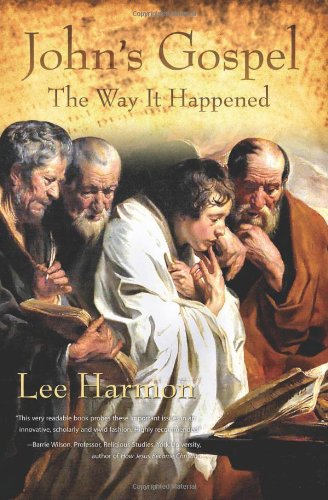

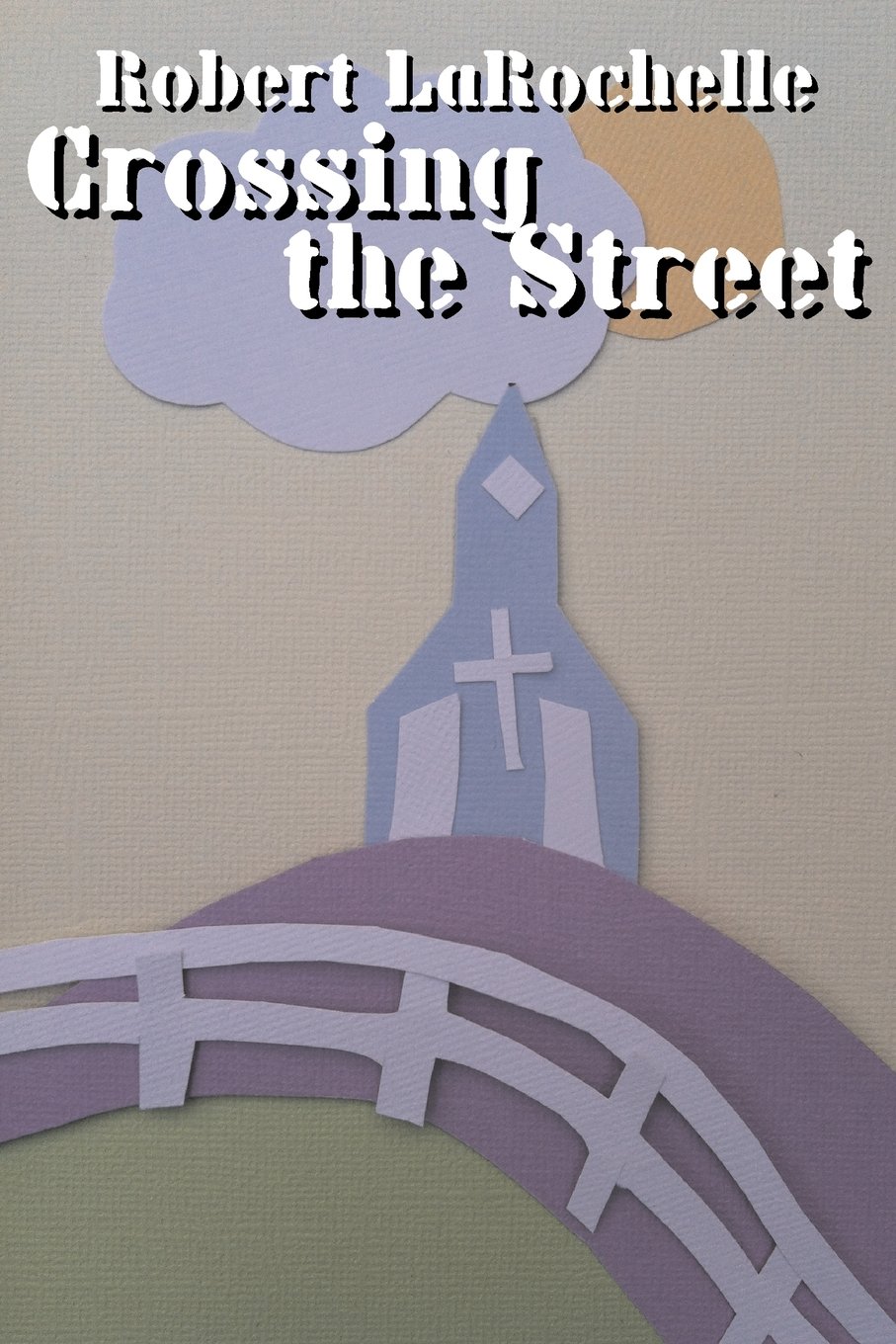
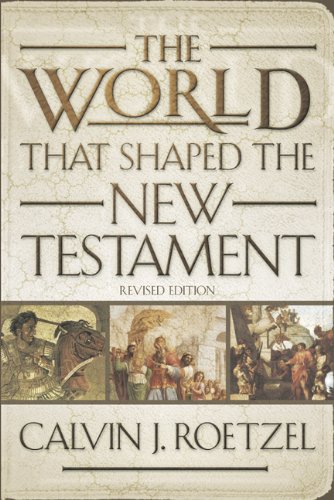
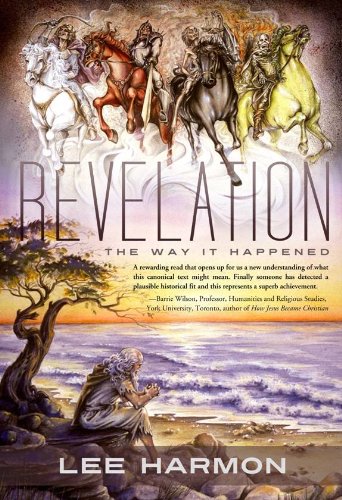
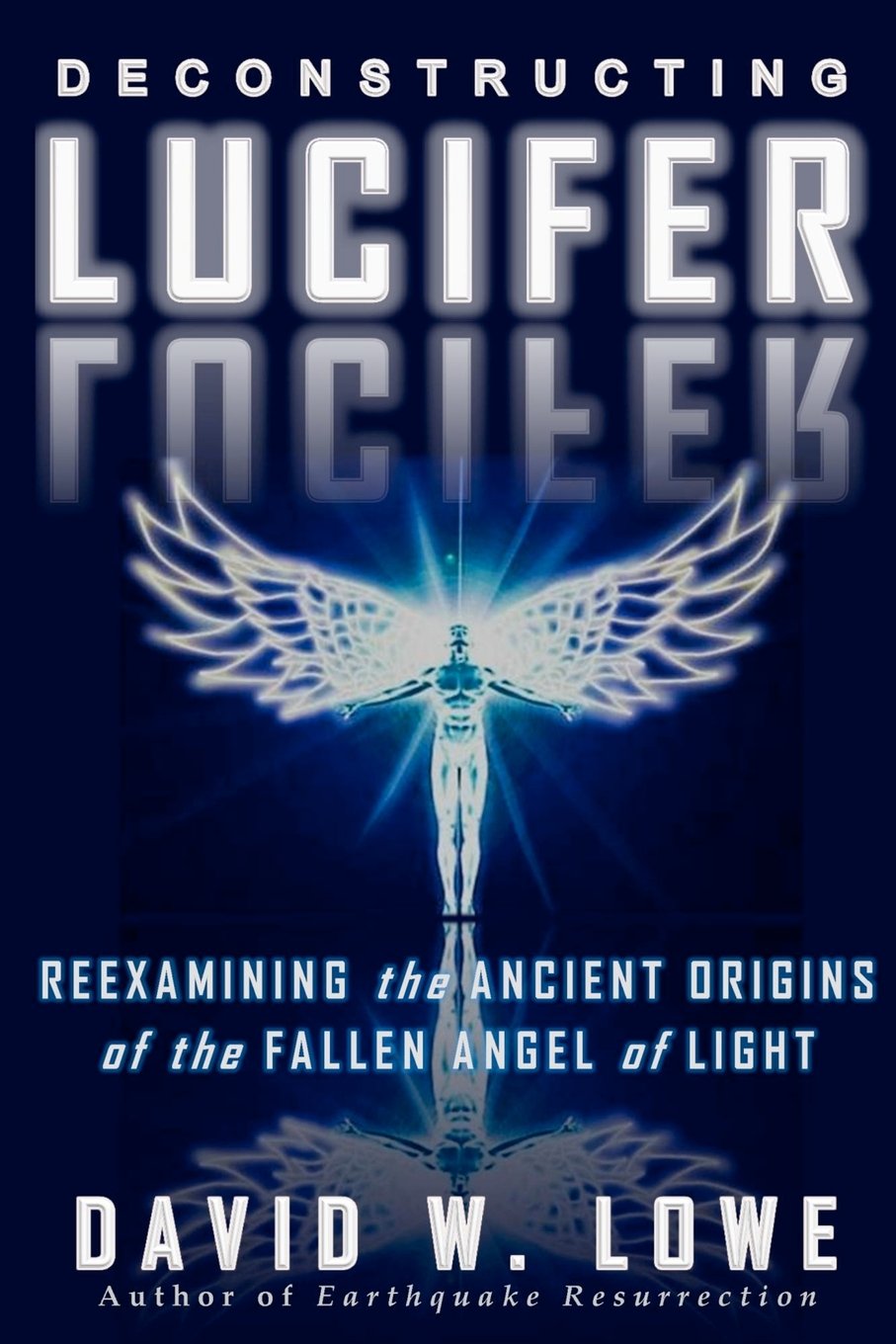
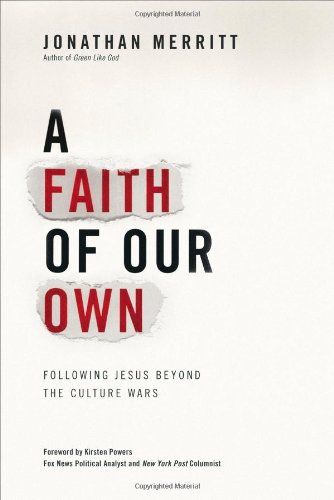

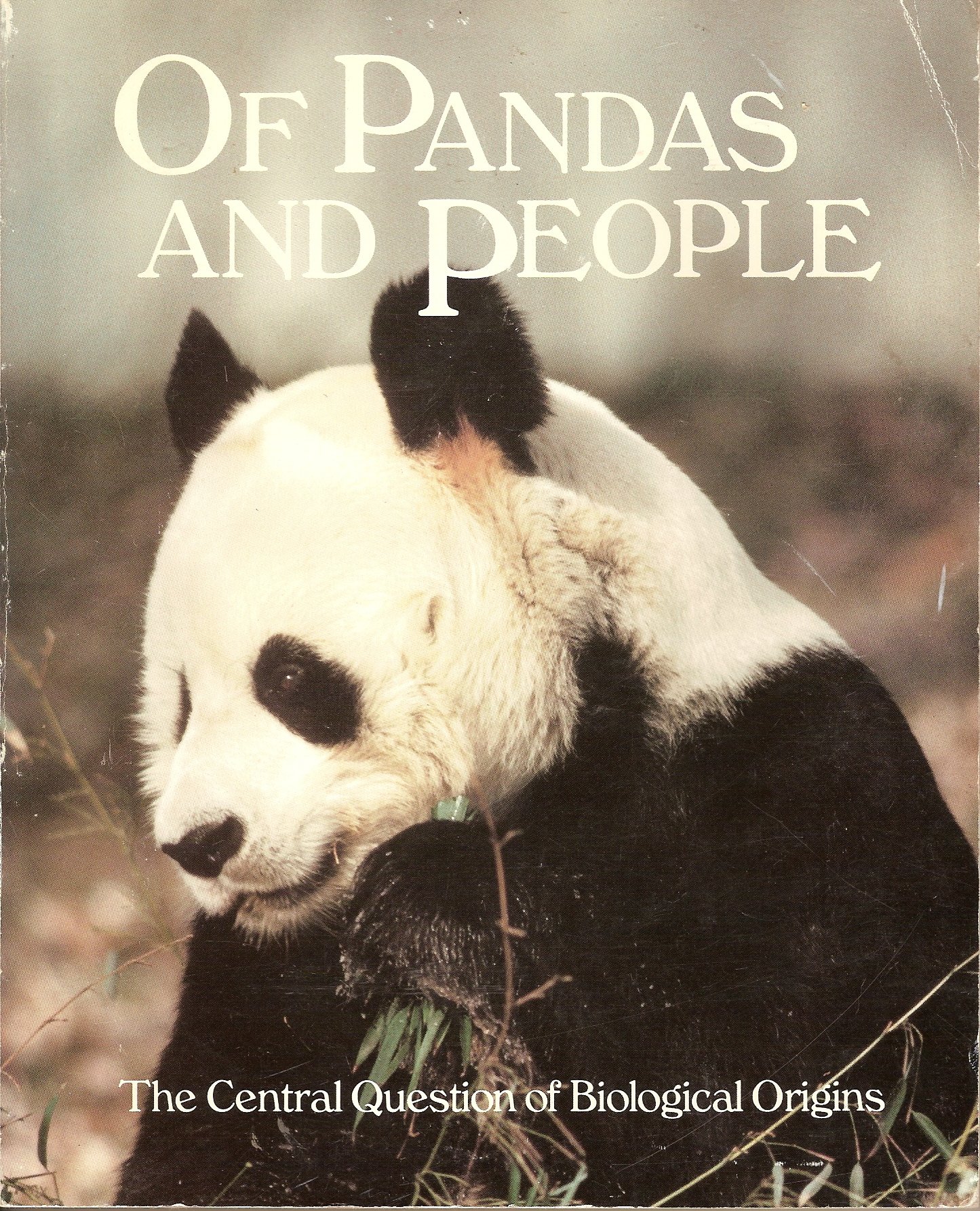
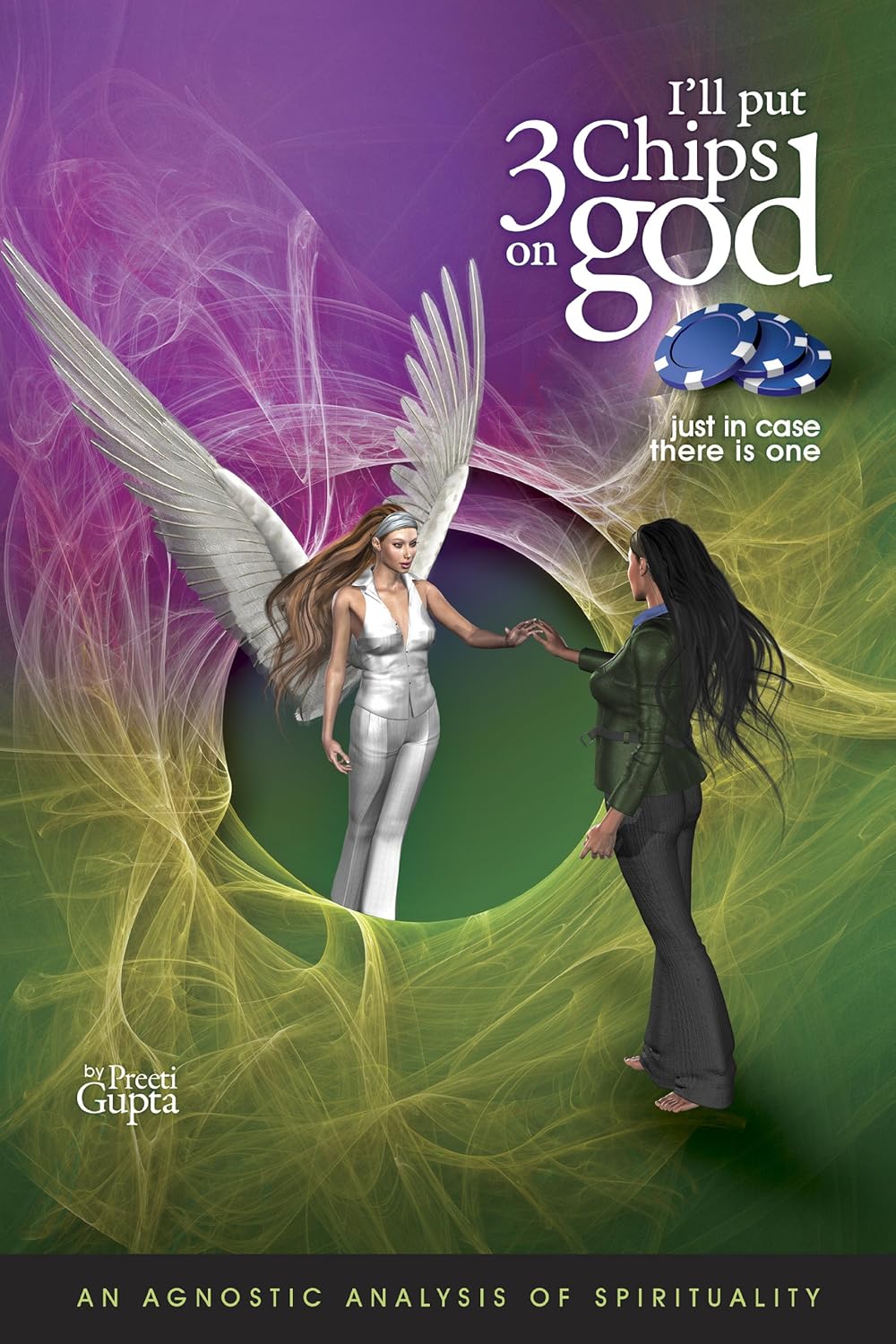
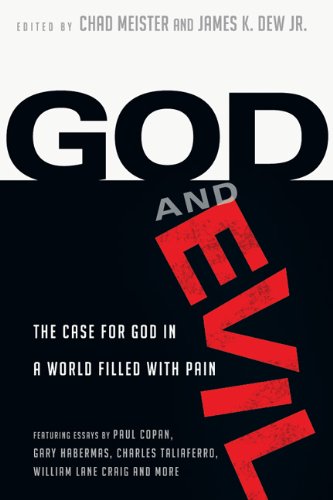
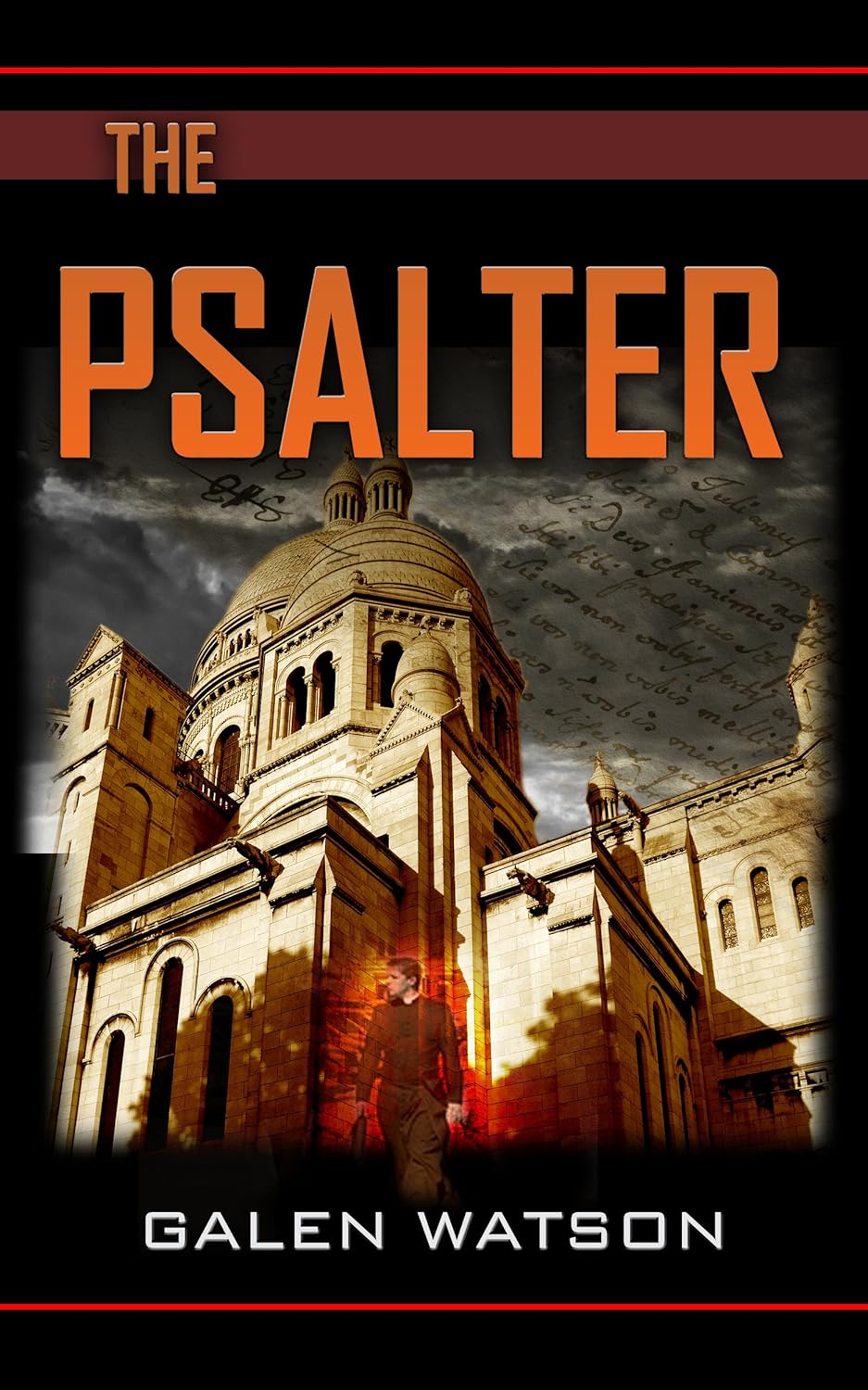
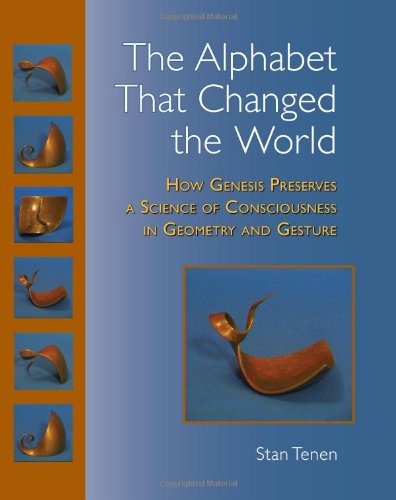
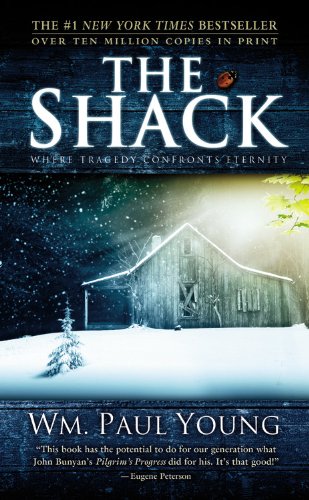

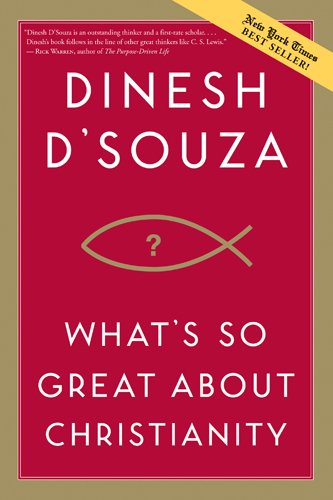
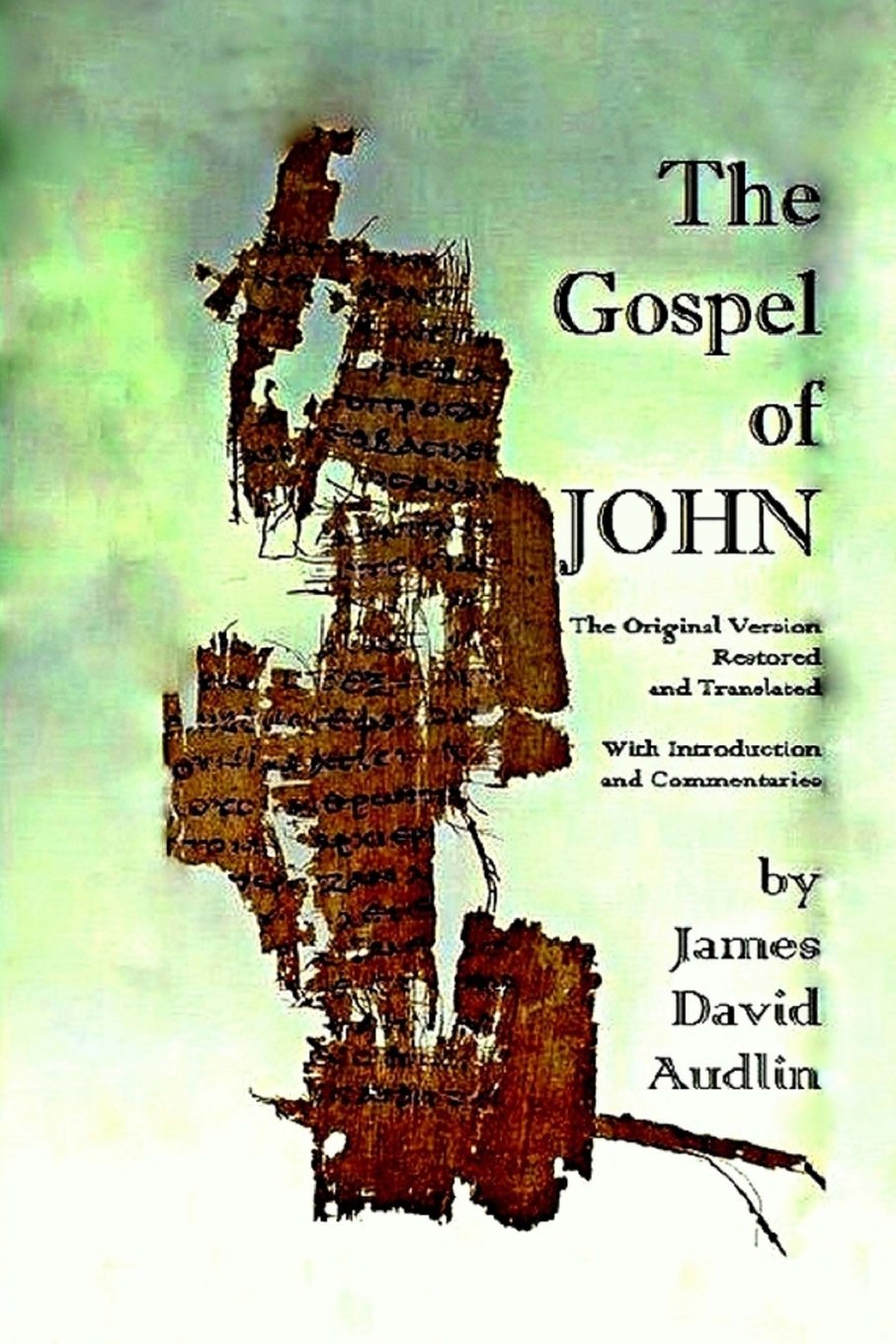










 354 Circles
354 Circles
 603 Goodreads Friends & Fans
603 Goodreads Friends & Fans

 Hello! I'm an author, historical Jesus scholar, book reviewer, and liberal Christian, which means I appreciate and attempt to exercise the humanitarian teachings of Jesus without getting hung up on any particular supernatural or religious beliefs.
The Bible is a magnificent book that has inspired and spiritually fed generations for thousands of years, and each new century seems to bring a deeper understanding of life’s purpose. This is true of not only Christianity; through the years, our age-old religions are slowly transforming from superstitious rituals into humanitarian philosophies. In short, we are growing up, and I am thrilled to be riding the wave.
I avidly read all thought-provoking religion titles. New authors: I'd love to read and review your book!
Hello! I'm an author, historical Jesus scholar, book reviewer, and liberal Christian, which means I appreciate and attempt to exercise the humanitarian teachings of Jesus without getting hung up on any particular supernatural or religious beliefs.
The Bible is a magnificent book that has inspired and spiritually fed generations for thousands of years, and each new century seems to bring a deeper understanding of life’s purpose. This is true of not only Christianity; through the years, our age-old religions are slowly transforming from superstitious rituals into humanitarian philosophies. In short, we are growing up, and I am thrilled to be riding the wave.
I avidly read all thought-provoking religion titles. New authors: I'd love to read and review your book!
 Hi! While Lee writes the articles and reviews the books, I edit, organize, and maintain the blog. The views expressed here are Lee's but I'm his biggest supporter! :-)
Hi! While Lee writes the articles and reviews the books, I edit, organize, and maintain the blog. The views expressed here are Lee's but I'm his biggest supporter! :-)
Connect With Me!